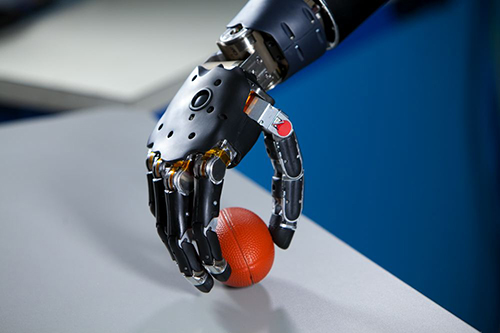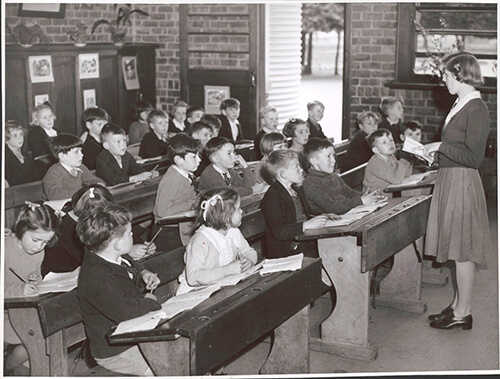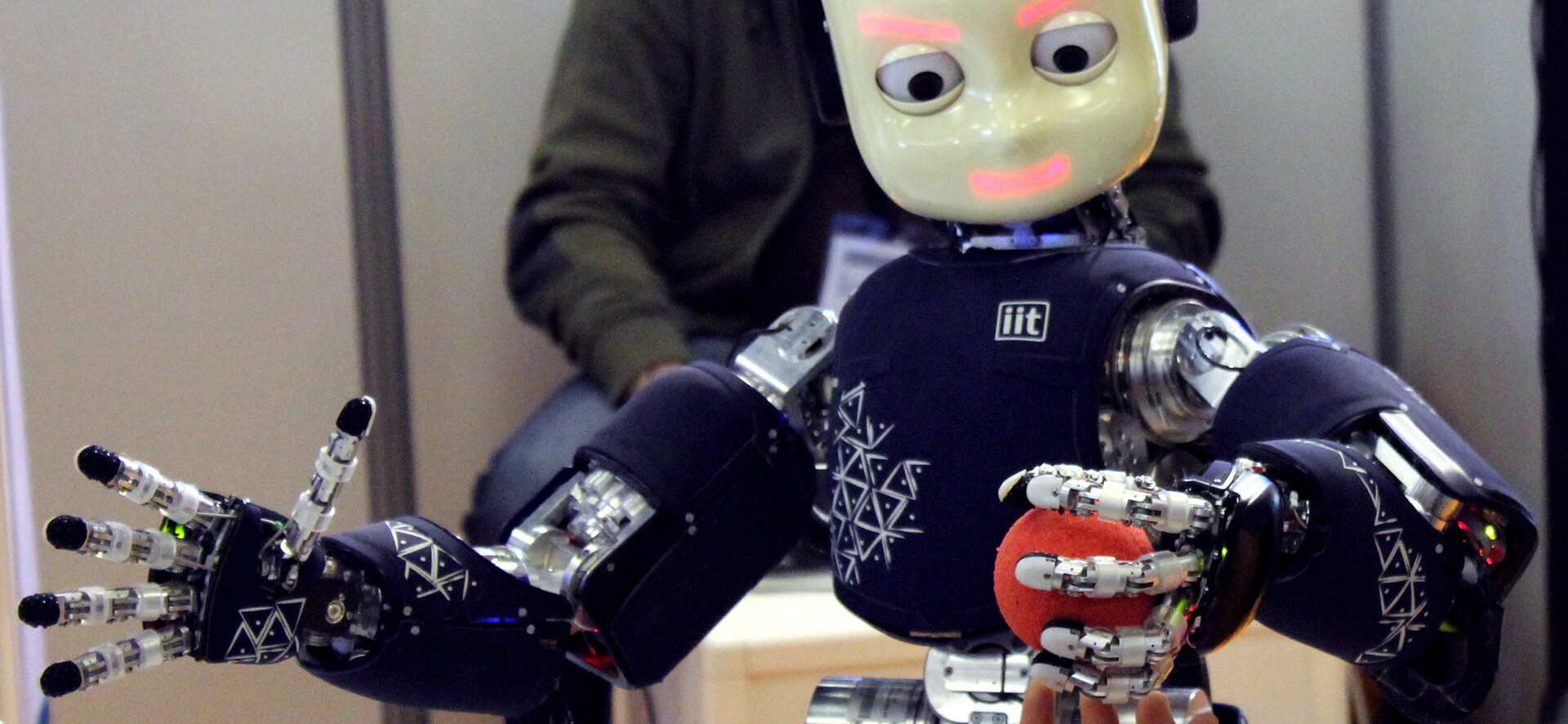“... Of two ways of looking at children now growing in fashion—seeing them as monsters of evil who must be beaten into submission, or as little two-legged walking computers whom we can program into geniuses, it is hard to know which is worse, and will do more harm. I write this book to oppose them both.”
—John Holt, How Children Learn
How Children Learn interpreted childhood and learning in disruptive ways when it was first published fifty years ago, and it continues to make waves with its striking ideas, particularly that children learn not primarily from formal instruction, but through their intense desire to be part of the world. The way Holt explores this insight in How Children Learn has inspired readers all over the world to consider learning from the child’s perspective and to change how they teach in schools, homes, and communities.
Holt revised the book in 1983 in light of his experiences with homeschoolers. It was a dramatic revision: he wrote some new chapters, including one about the importance of fantasy play, and made a huge number of additions to his older text; the revised book is almost twice as long as the original. Holt’s words about homeschooling brought the largest amount of attention to the book in 1983, but in 2017 I want to explore the other main topic in the book—his critique of technological methods for learning by and about children.
Holt anticipated and nurtured the growth of homeschooling as a reaction to the failure of school reform, and he also foretold the way school will join forces with technologists to customize education for students and the dangers such an approach holds.
Big Schooling and Personalized Learning

Such humility is hard to find among all who control the levers of power for schools. Rather than call for the difficult task of dealing with the root causes of school dysfunction—the socio-economic challenges that demonstrably hinder learning—with an ongoing, interagency approach to education (until 1979 the Department of Education was part of the Department of Health, Education, and Welfare) we continue to silo these agencies and double-down on the teach ’em and test em school model, jazzed up with technology and motivational lectures, and act as if how children learn in school is an independent factor to their lives outside of school.
While educators fiddle, Rome burns. Grades may move up a notch, but “the suicide rate among 10- to 14-year-olds doubled between 2007 and 2014, for the first time surpassing the death rate in that age group from car crashes, according to the Centers for Disease Control and Prevention.” We can’t tie all those deaths to school, but the article lists pressure to get high grades and economic uncertainty as the first two factors, which indicates that school and society are not giving a growing number of children hope and a reason to live.
Holt wants school to be about far more than success and failure over knowledge acquisition: “When we better understand the ways, conditions, and spirit in which children do their best learning, and are able to make school into a place where they can use and improve the style of thinking and learning natural to them, we may be able to prevent much of this failure. School may then become a place in which all children grow, not just in size, not even in knowledge, but in curiosity, courage, confidence, independence, resourcefulness, resilience, patience, competence, and understanding.”
50 years later, measuring knowledge retention is still more important than any other factor in school, and this relentless focus makes promising ideas like personalized learning a handmaiden to schools’ needs, not learners’ needs.
When I first learned about personalized learning, I thought it would be a great complement to
But she added that personalized learning must also promote “student agency”—basically, giving students more power through either digital tools or other means, accounting for how they learn best, what motivates them, and their academic goals. The most effective digital tools support that purpose, she said.
“Technology can help provide students with more choices on how they’re going to learn a lesson,” Ms. Patrick said. “[It] empowers teachers in personalizing learning” and “empowers students through their own exercise of choice.”
From Education Week
When Holt uses the phrase self-directed learning in How Children Learn, he means the learner chooses why, what, when, how, and from whom (if someone is necessary) to learn. In personalized learning, the teachers choose the topics and lessons, and the students choose which ones they want to do and how they want to learn it. Control and prediction of student behavior is well contained in this situation, though, to paraphrase Ivan Illich, a mandatory selection of prepackaged goods is hardly a genuine choice.
Nonetheless, most people claim children won’t learn anything they’ll need to know as adults if they are allowed freedom to learn as children, and that’s why a child’s day must be filled with tasks and drills—”Just keep the kids busy!” is a common refrain among harried adults in and out of school. And this becomes a self-fulfilling prophecy: In a recent Gallup survey “Only 1 in 5 parents reported agreeing that it can be good for children to ‘be bored now and then,’ and only a third of parents first responded to their children expressing boredom by letting them find something to do on their own.”
Adults think nothing of providing unasked-for teaching to children—though most adults would think it rude and presumptuous if someone corrected their speech, spelling, or math in public. Holt notes how children learn before they become schoolchildren:
What is essential is to realize that children learn independently, not in bunches; that they learn out of interest and curiosity, not to please or appease the adults in power; and that they ought to be in control of their own learning, deciding for themselves what they want to learn and how they want to learn it.
Around the same time Holt was revising How Children Learn, Ted Sizer was gaining recognition for his efforts at reforming schools from within the system. In Horace’s Compromise: The Dilemma of the American High School (p.205) Sizer writes an uncomfortable truth about schooling that complements Holt’s ideas about learning.
Learning is a human activity, and depends absolutely (if often annoyingly) on human idiosyncrasy. We can arrange for schools, classes, and curricula, but the game is won or lost for reasons beyond these arrangements. The readiness of the students, the power of the incentives they feel for learning, and the potency of teachers’ inspiration count more than does any structure of any school. Run a school like a factory, and you will get uneven goods.
It’s been three decades since Sizer and Holt wrote those words and the school-factory model is still entrenched, now retrofitted with computers, historical data, and algorithms based on the assumptions of school curricula. Welcome to the same old school system, only with personalized learning as the new user interface.
The Dead Hand of Data Past Holds You Back

Big data companies want to mine our school records (anonymously, they claim and we hope) for all sorts of correlations, but is it wise to give much weight to this data set? Teachers’ comments sometimes reflect hostility towards students, grades can be lowered for disciplinary or other reasons that have nothing to do with the subject matter, and other issues with how school grades are determined make this a poor data set to start with. Further, doing poorly in school does not strongly correlate to doing poorly in one’s later life—are there not prosperous illiterates, bankrupt college graduates, and all sorts of people in-between? What sort of insights can we get from someone’s grades in school if the grades and subjects do not correlate to anything these people do out of school as children and adults? Shouldn’t the students own their personal educational records, as they do their medical records, and therefore be the only people able to release them to public scrutiny? Shouldn’t education be forward-looking for its participants, not stunting?
Scientist and celebrity Neil deGrasse Tyson was invited to give a commencement address at his elementary school but refused. In a New Yorker profile,
He recalled telling the administration, ‘I am where I am not because of what happened in school but in spite of it, and it probably is not what you want me to say. Call me back, and I will address your teachers and give them a piece of my mind.’
“A more important education came from his parents... Tyson’s mother gave him a pair of folding opera glasses, which provided his first magnified look at the night sky. In middle school, he bought a telescope with money that he earned by walking neighbors’ dogs—’It was the golden age of dog walking, because you didn’t have to clean up after them,’ he recalls—and studied the sky from the roof of his apartment building. In his bedroom, he arranged glow-in-the-dark stars in the shape of constellations.
Holt writes, very strongly, that school is not enough anymore. We need other places for children to learn and grow, to organize their own games and play, to have solitude, and other adults and children to socialize with. “It is only in the presence of loving, respectful, trusting adults . . . that children will learn all they are capable of learning, or reveal to us what they are learning,” Holt writes. “The tinkerers, dissectors, and manipulators will only drive children into artificial behavior, if not actual deception, evasion, and retreat.”
Two-Legged Walking Computers

behavior changed markedly for the worse in almost every respect when they were crowded into a small space. Other experiments with rats showed that their performance on tasks could be strongly affected by how their human handlers felt about them; rats who had been described to their handlers as smart performed better than identical rats described to their handlers as dumb. Do machines get nervous and break down when we put a lot of them in a room? Do they work better if we talk nicely to them? Some might say that we could someday design computers that would do that. I doubt it very much. But even if we could, the fact that we might make certain machines a little more like animals does not prove in the least that organisms are, or even are like, machines.
A remarkable element in Holt’s work that is missing from much writing about education is its grounding in the world as it feels to children. The more I learn about personalized learning, the more it seems based on learning as school thinks it should be for students rather than how it actually feels to them. Here, again, is where some humility is needed, because adults are way too quick to offer solutions, suggestions for further research, and mini-lectures to a child’s question. John writes, “Children trying out new things are like plants putting out little green shoots. We must be careful not to cut them off.”
In his first book, How Children Fail, Holt describes the charade of learning that occurred in the private schools he taught in. Despite good test scores and the school’s strong academic reputation, most of the students did not retain what the school claimed they learned, as evidenced by the same test, given unannounced, to the same class the next week. Holt’s firsthand experiences as a teacher made him realize that an average of test scores doesn’t prove that information has been learned and incorporated into any student’s brain.
The human mind is a mystery. To a very large extent it will probably always be so. We will never get very far in education until we realize this and give up the delusion that we can know, measure, and control what goes on in children’s minds. To know one’s own mind is difficult enough . . . How preposterous to imagine that I can know what goes on in someone else’s.
Making Us Overly Self-Conscious About Learning

In exploring Piaget’s work and other research on how children learn, Holt claims there is “a very profoundly mistaken assumption in all this research: that from what we can learn about people in a very limited, unusual, and often very anxious situation we can make reliable judgments about what they do in very different and more usual situations.” John is sensitive to how context influences children’s learning; anything that induces fear or anxiety in learners is certain to influence the results. He cites researchers like Glenda Bissex and Millicent Shin, among others, as models for how to observe and write about children’s learning without invalidating the child’s experience, which modern research is rather insensitive to. Holt notes that researchers who wire children to machines to record their neurological patterns while they learn are sending a subtle but strong message to children and adults: “You cannot learn anything about yourself from your own experience, but must believe whatever we experts tell you.”
A fascinating historical feature emerged to me as I read the 50th anniversary edition of How Children Learn. The book and its revision also document a history of school reform and the growth of homeschooling from the 1960s to the 1980s, as well as the rise and influence of child psychology in school, particularly behavior modification. Holt notes how when he first wrote the book, “Babies were seen to be mostly as blobs, waiting for time to begin to turn them into people worthy of serious attention.” By the 1980s, Holt describes how the field of child psychology took off and the role of certain experts and research findings, particularly those in support of behavior modification techniques in schools, expanded their influence in classroom management.
Another effort schools are implementing with computers to increase student agency is mastery learning—students can take as long as it takes to learn something, and once they can prove they’ve learned it they can move on to the next level of learning. Taking the pressure off children to learn subjects in set amounts of time is good, but the checklist approach to learning is an artifact of school grades and a shallow goal. Holt writes often about the fluidity of knowledge, how tentative a concept or skill is at first and how we often need to return to it in many ways before we can be certain we “get it,” though we may be able to answer questions about it. Holt cites Dr. David Hawkins’ work in teaching elementary science—”Messing About in Science”—and quotes him at length, including this insightful sentence.
When the mind is evolving the abstractions which will lead to physical comprehension, all of us must cross the line between ignorance and insight many times before we truly understand.
It is the bureaucratic needs of schooling, the need to check a box and move to the next unchecked box, that creates a forced march in education, not the needs and learning schedules of individual students. Brain research, neuroscience, and technology are portrayed as the saviors of Alma Mater, but must we pour all our resources into their promised innovations rather than make our schools better now? Holt writes
. . . [Brain] research is interesting and may prove to be useful, but it has nothing to do with the aims of this book. We do not need to learn more about the brain, as an organ, in order to make schools better. We could make them a great deal better, knowing no more about the brain than most people know right now.
. . . This book is more about children than about child psychology. I hope those who read it will to feel, or feel more than when they opened it, that children are interesting and worth looking at. I hope that when they look they will notice many things they never noticed before, and in these find much food for thought. I want to whet their curiosity and sharpen their vision, more than to add to their understanding; to make them skeptical of old dogmas, rather than give them new ones.
Unfortunately the old dogmas of more testing, more control of student behavior, and more weight for school grades to affect your destiny are supported by the same technologies and personnel that depend on school as it is for their livelihoods. So what can we do? Holt’s answer to parents is trust your children to show you how they learn and trust yourself to help them do so; to teachers, it is for them to be trusted as the bosses of their own classrooms who are able to work with each student in the way they think will help best; to school and society, it is to be more welcoming and tolerant of children.
In my mind’s ear I can hear the anxious voices of a hundred teachers asking me, “How can you tell, how can you be sure what the children are learning, or even that they are learning anything?” The answer is simple. We can’t tell. We can’t be sure. What I am trying to say about education rests on a belief that, though there is much evidence to support it, I cannot prove, and that may never be proved. Call it a faith. This faith is that man is by nature a learning animal. Birds fly, fish swim; man thinks and learns. Therefore, we do not need to “motivate” children into learning, by wheedling, bribing, or bullying. We do not need to keep picking away at their minds to make sure they are learning. What we need to do, and all we need to do, is bring as much of the world as we can into the school and the classroom; give children as much help and guidance as they need and ask for; listen respectfully when they feel like talking; and then get out of the way. We can trust them to do the rest.
If you enjoyed this article and feel called to give back to ASDE, here are ways you can support our work:
- Donate money
- Share our content with others! Click one of the buttons above to easily share on Twitter, Facebook, or email.
- Consider becoming a Contributor for Tipping Points
Tipping Points Magazine amplifies the diverse voices within the Self-Directed Education movement. The views expressed in our content belong solely to the author(s). The Alliance for Self-Directed Education disclaims responsibility for any interpretation or application of the information provided. Engage in dialogue by reaching out to the author(s) directly.






